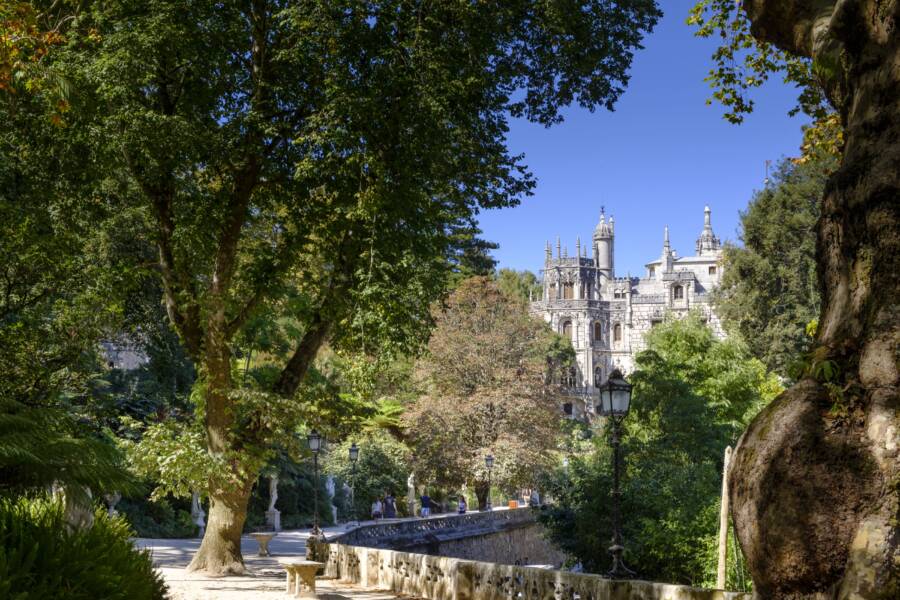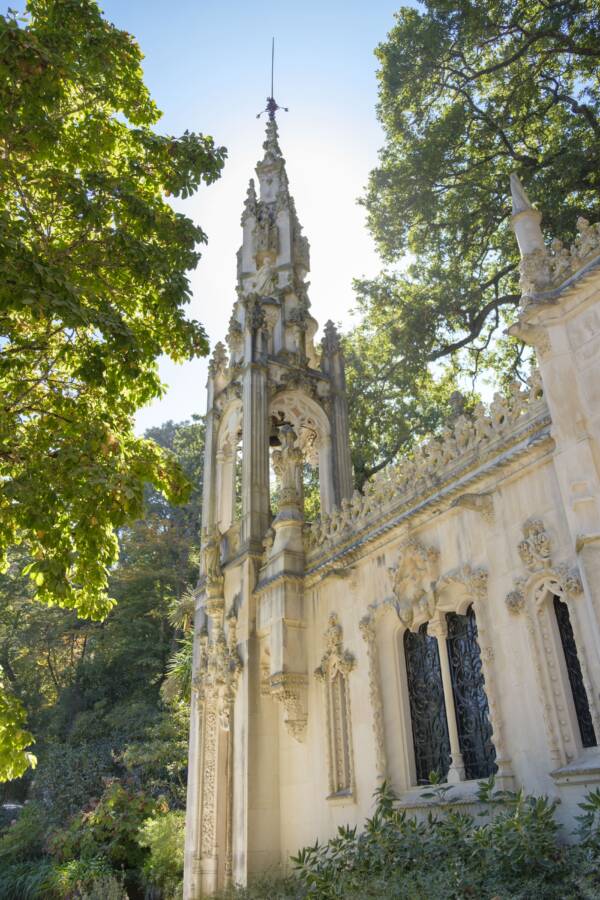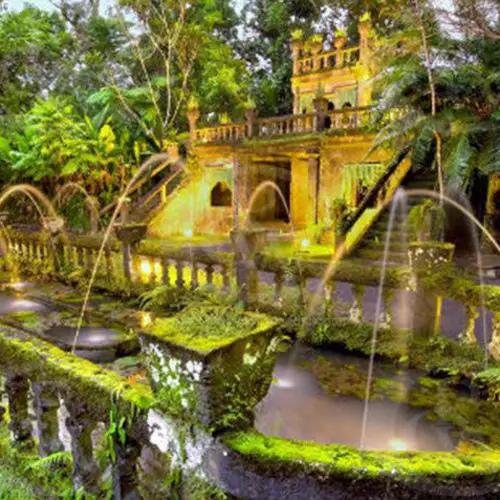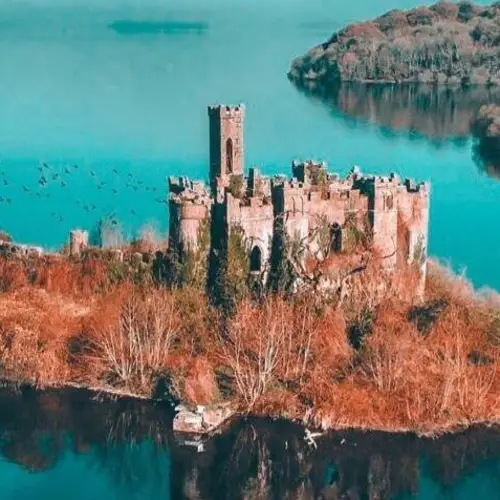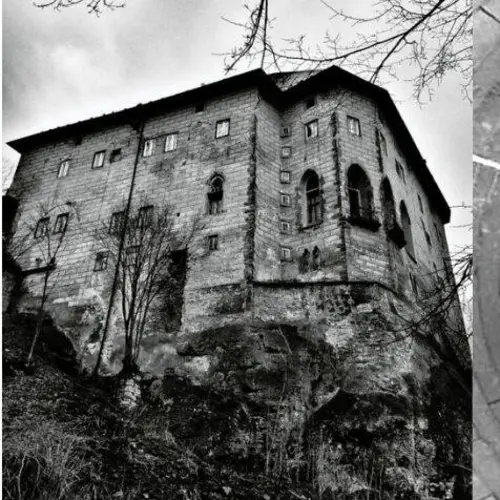Quinta Da Regaleira is a major tourist attraction in Sintra, Portugal, known for its mystical quality and its abundant use of secret societies' symbolism and iconography.
On a historic hilltop estate in Sintra, Portugal, sits the stunning palace named Quinta da Regaleira. An eccentric entomologist by the name of António Augusto Carvalho Monteiro began work on his architectural wonder in 1904 with the help of Italian architect Luigi Manini.
Built over six years in a mix of architectural styles, the feature that makes the grand palace so famous is the clever use of symbols throughout the estate directly alluding to several prominent secret societies.
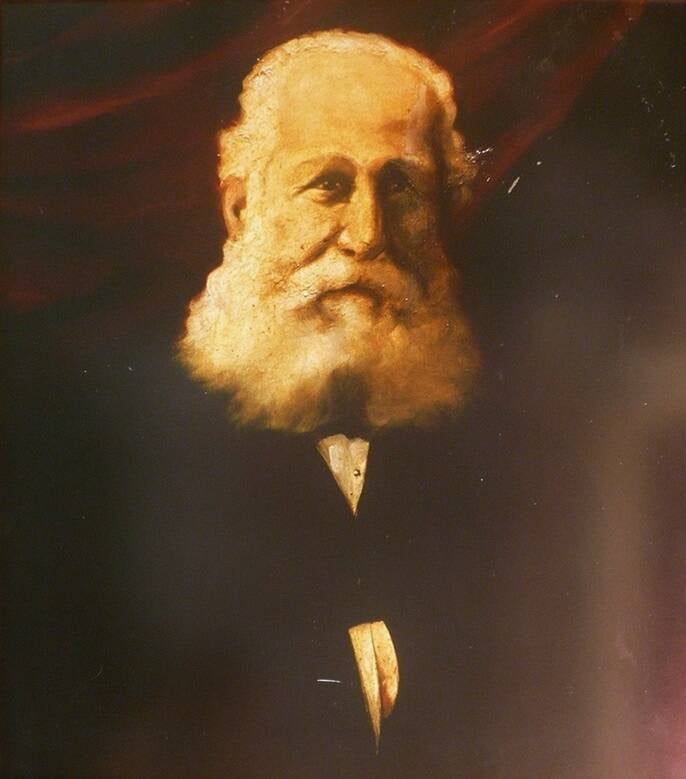
Wikimedia CommonsCarvalho Monteiro (1848-1920).
The five-floor palace mixes Neo-Gothic, Italian Neo-Renaissance, and Manueline (16th century, ornate Portuguese) styles. The quinta — or estate — surrounding the mansion and its above-ground chapel contain various grottoes, statues, water features, an underground tunnel system, and perhaps most famously, an Initiation Well. Whether this deep, mossy well was the site of actual Freemason initiation rituals isn't known, but it was clearly inspired by and familiar with them.
Aside from Freemasonry, the palace also contains subtle nods to alchemy, the Knights Templar, and the Rosicrucians — the latter was an early 15th-century brotherhood who believed they possessed esoteric wisdom from the ancients. The main chapel contains mostly Roman Catholic imagery, but with a few pentagrams thrown in for good measure. Did we mention Monteiro was eccentric?
These nods to the past add up to a grand historic tribute that's difficult to imagine unless you visit.
The Initiation Well
One of the more well-known attributes of Quinta da Regaleira is the pair of wells. The larger one is initiation well, or inverted tower, with nine flights of spiral stairs carved into the wall leading down to the floor of the well.
The number nine is significant in Christianity because of its association with a divine plan and finality, which inspired the structure of Hell, Purgatory, and Paradise in Dante's Divine Comedy. Then you have the fact that the eight Knights Templar together with one Grandmaster who founded the Templar order, their numbers adding up to nine as well.
Many believe that Montiero (and architect Manini) were so well versed in this symbolism, that they likely belonged to one or some of these societies themselves.
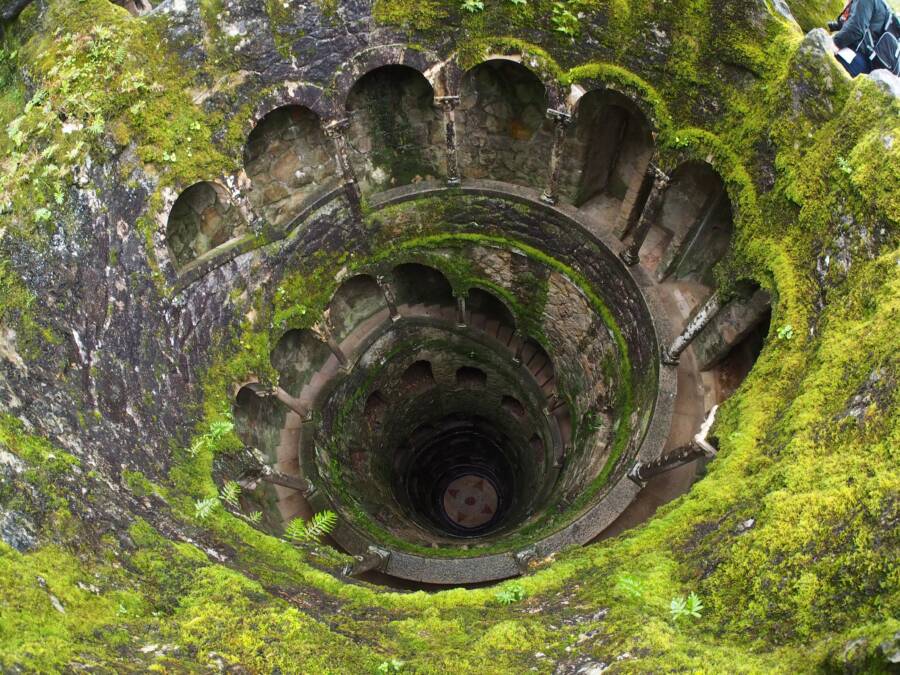
Stijndon/Wikimedia Commons
An initiation ritual could have seen a hopeful initiate led down the spiral staircase, where he'd have to find his way through a maze of underground tunnels (the Knights Templar were also really into tunnels). At the end of one tunnel is a second, smaller chapel with other tunnels leading to places like the other, smaller initiation well, and back outside to the grounds through the mouth of a grotto.
Layout, Rooms, And Details
The five levels contain mostly benign rooms; a living room, dining room, and a billiard room can be found on the main floor. Bedrooms and a dressing room are on the second level. The third level has Monteiro's office, plus a few servant bedrooms. The top floor has a small area with access to a balcony and terrace and laundry room. The kitchen, complete with dumbwaiter, and yet more servant quarters and storage space are located on the lowest level.
While architectural details abound in the form of lavish frescoes, stained glass, and engravings, there are not as many furnishings as one might expect.
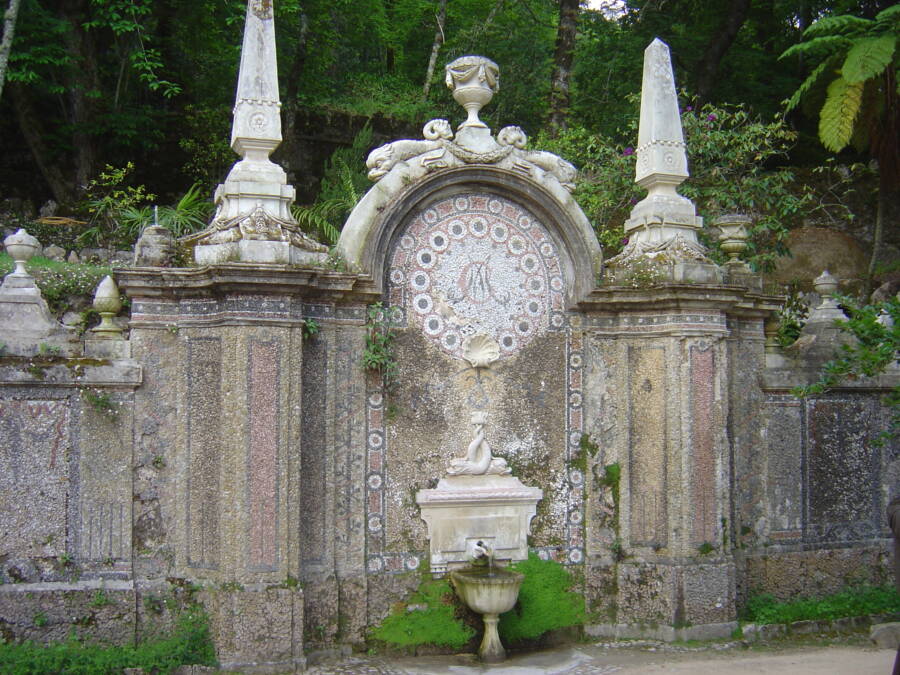
Husond/Wikimedia CommonsThe Fount of Abundance.
As fascinating as the palace is, the grounds of the Quinta da Regaleira have their own charm. The sheer mix of trees and flowering plants create a lush and somewhat otherworldly backdrop for the palace and other architectural features on the grounds. For instance, the Fount of Abundance is a massive marble facade, surrounded by obelisks, and adorned with seashells and serpent-like creatures.
History Of The Quinta da Regaleira
The area on which the estate sits was occupied by the Romans from the mid-2nd-century B.C. until the Moors conquered it. Then the land passed to the Order of Christ — the continuation of the Knights Templar following their suppression in 1312.
In the late 15th century, the area of Sintra was associated with Leonor, a great Queen of Portugal. After this, Afonso Henriques, the first king of Portugal, built a royal Palace on the land in the late 16th-century.
Unfortunately, a lot of the built heritage of the site was destroyed in an earthquake in 1755.
From there, D. Ermelinda Monteiro de Almeida acquired the land. It was then purchased by Carvalho Monteiro in 1892, intending to build a unique place that would reflect his mix of ideologies. He certainly succeeded.
After Monteiro's death, the estate was sold to Waldemar d'Orey in 1942, whose family utilized it as a summer home. Then, in 1987, the Japanese Aoki Corporation purchased it.
In 1995, Quinta da Regaleira was designated as a UNESCO World Heritage site in recognition of its cultural significance.
Finally, in 1997, the Sintra Town Council purchased it and opened it to the public the following year. After its transformation into a tourist attraction, the Sintra Town Council turned the top level of the mansion into a museum for the site.
Next, read about Sintra, Portugal's city of architectural delights. Then, see Kryžių Kalnas, the mysterious hill of crosses in Lithuania, through these 20 haunting photos.

